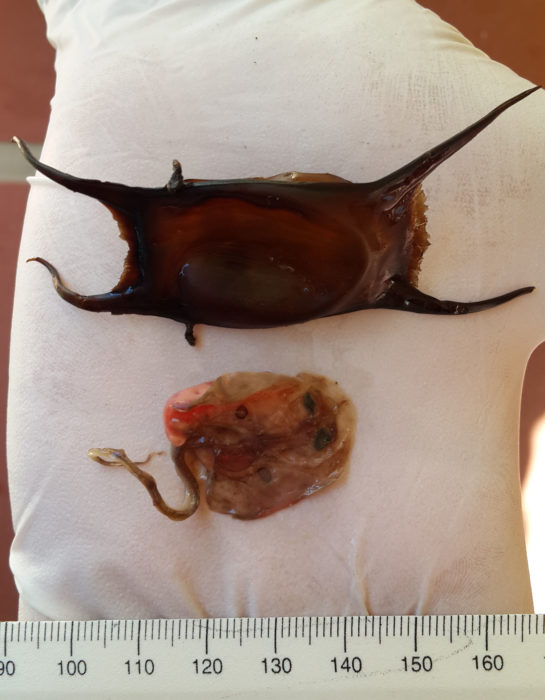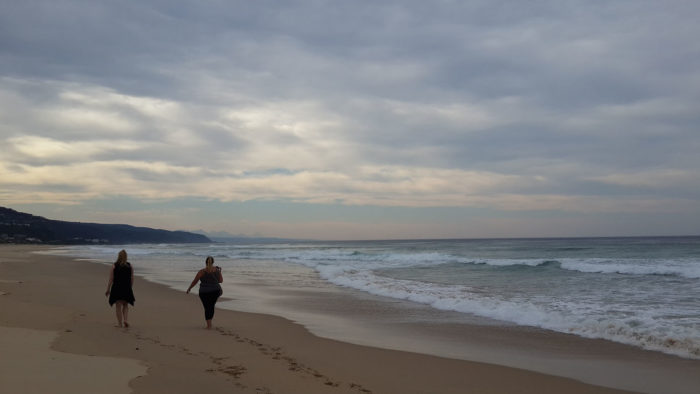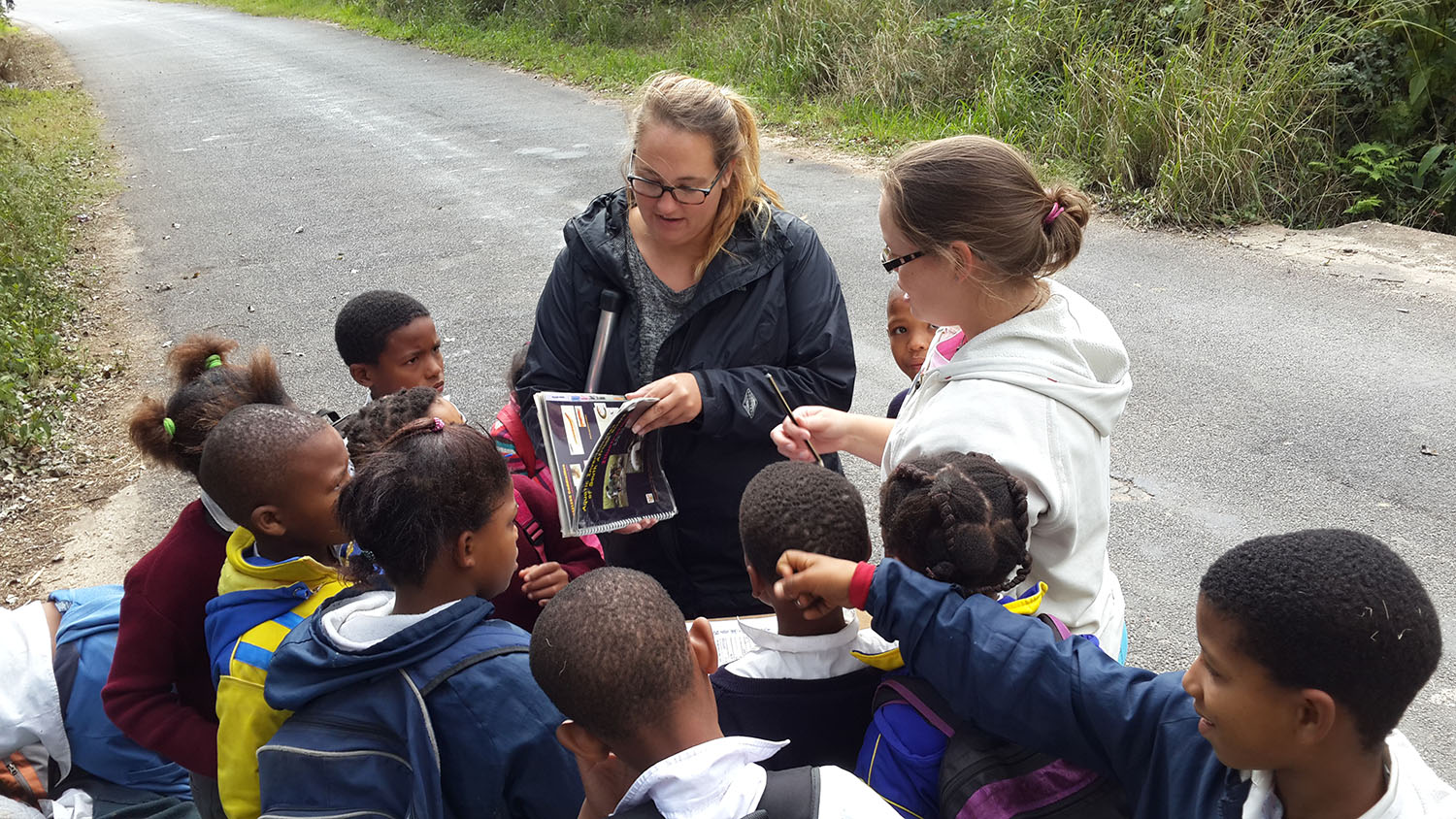It really feels like the months are flying by, especially when the time comes for the monthly research blog to be written. It was just the other day that I wrote the last blog, though in reality it was 4 weeks ago! As usual, the first project to report on is the elasmobranch egg case project, which is up to 1726 egg cases collected! This month we found our first intact, but sadly dead, foetus. While many people may find this an unexciting and a little gross, the ORCA team was fascinated! The foetus was that of a twineyed skate, and whilst it is unfortunate that this creature did not survive to hatching, it is fantastic to have our identification of the egg case (and others like it) confirmed, and it also shows that breeding is happening at the moment, and not all of the egg cases are old. It was also great to have a visit by Lisa Schroeter, creator of ELMO and collaborator on our project. We talked about our now extensive egg case collection and the identification of the various species, and what we got out of the brain storming was that as much as we thought we knew, there was a whole lot we didn’t know!

We get a variety of people through our volunteer program, and not all of them are in an environmentally orientated job or studies. Our wish is that they leave ORCA with a better understanding of the natural environment and the part humans play in it, as well as a deeper appreciation for our natural world. To this end it was decided that we would make contributions to iSpot a more focused activity, asking volunteers on an almost daily basis to upload photos and corresponding GPS location and identification to iSpot. So often people look, but don’t see, listen, but do not hear. Our hope is that this endeavour will encourage our volunteers to really see the beauty and diversity of creatures and plants in Plettenberg Bay, and learn more about them as they identify them using our guide books.
While we spend a lot of time on the beach, and looking at our coastal diversity, we haven’t spent much time in our estuarine system. One afternoon we donned wetsuits and braved the rather frigid waters of the Keurbooms River to see what we might find, with the obvious hope of finding a Knysna Seahorse. The water was clear and beautiful, and although we didn’t see any seahorses or fish, we found three species of sea slugs! It was great to take some time out and float on the water, peering into a fascinating underwater world.

Another water activity we did this month was a miniSASS at our usual spot. This time, however, we were joined by a number of children from the local school up the road who stopped to see what we were doing on their way home. Their English was limited, as is Minke’s Afrikaans, but what we were doing boiled down to the simple explanation that by looking at the insects living in the water we can tell how sick or healthy the river is. This was a sufficient explanation for the groups of children, who were far more interested at looking at the nunus we had found through the magnifying glasses than knowing exactly what they were and why we were catching them!
As usual we did some bird ringing this month, catching what seemed like a full flock of Cape Weavers! A new ringing session we attempted this month was raptor ringing, and most unfortunately this was quite unsuccessful! Raptor ringing is different from our usual bird ringing in two fundamental ways. Firstly, we use live bait (in this case a juvenile rat named Eugene who was unharmed in this process and in fact got fed biscuits for his troubles), and secondly, it is not a stationary activity where we set up nets and wait for birds to fly in, but we actively search for birds of prey and lure them to the trap. With a jerky start to the morning we finally got underway and headed over the Bloukrans Pass and onto the R62 to George keeping eyes peeled for raptors! Although we dropped the trap for a few birds of a variety of species including Black-shouldered Kites, a Long-crested Eagle, Forest Buzzards, and a Jackal Buzzard we caught nothing. We did, however, have a great time of beautiful scenery, amazing company, and delicious snacks to keep us going through the day!
Kellyn Whitehead is doing her Masters degree with Nature’s Valley Trust, one of our partners, and she needed a bit of help with her fieldwork. Our volunteers joined her one morning to assist her setting up her cage experiment which is used to determine the most effective pollinator of a plant. It was great to have our volunteers exposed to a different research method where they learnt about pollination biology, and helped with valuable research in the area.
With another month down, we are looking forward to what other projects and activities we can get involved with and do, and also looking forward to the start of the whale season!
Written by Minke Witteveen, ORCA Foundation Researcher

